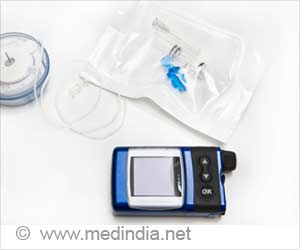A study of the South American “paradoxical frog” (Pseudis paradoxa) at Ulster University promises to boost insulin production to cure diabetes.
A study of the South American “paradoxical frog” (Pseudis paradoxa) at Ulster University promises to boost insulin production to cure diabetes.
The paradoxical frog is so called because it shrinks as it grows older that makes the tadpole look bigger than the fully-grown frog. The study has revealed the skin on its back contains a compound that boosts insulin production.Scientists studying the properties of the frog’s slimy skin have found a substance that can stimulate the release of insulin. Deficiency of insulin causes diabetes where the patients have elevated blood sugar levels.
The study has attempted a synthetic version of the peptide, a protein-building block that protects the frog from infection, and has suggested that it could be used to boost insulin production in people with Type 2 diabetes.
Researcher Dr Yasser Abdel-Wahab, who will present his findings at the Diabetes UK Annual Professional Conference in Glasgow Monday, said: "Now we need to put our work into practice to try to help people with type 2 diabetes.
"More research is needed but there is a growing body of work around natural anti-diabetic drug discovery that is already yielding fascinating results."
Douglas Smallwood, chief executive of Diabetes UK, said: "Good diabetes control reduces the risk of complications including blindness, heart disease, kidney problems and amputation, so new treatments are vital."
Advertisement
A diabetic condition is initially kept in check by a tightly controlled diet and exercise regime to reduce the high sugar levels that the body cannot use.
Advertisement
The joint team from the University of Ulster in Northern Ireland and United Arab Emirates University are working to produce a synthetic version of pseudin-2 that could join a new class of medicines, called incretin mimetics, to help diabetics to control their condition when dietary changes or other medicines have failed.
Laboratory tests have showed that the paradoxical frog’s peptide, known as pseudin-2, increased release of insulin in cultured cells by 50 per cent. The researchers believe that more work must be carried out before the therapy is ready to be tested on human patients.
Currently there are 2.3 million people suffering from diabetes in the UK. Most of them have the Type 2 form of the disease that usually occurs in middle age. Type 2 diabetes is often associated with lifestyle factors such as obesity and stress factors.
Scientists are constantly researching on the skin secretions of frogs and other amphibians for new cures using biological agents. Byetta, a diabetes drug based on the saliva of an endangered lizard, the Gila monster of North America, is already available in the UK. Scientists believe that the new cure from the paradoxical frog could prove to be even more effective.
Source-Medindia
THK/L










